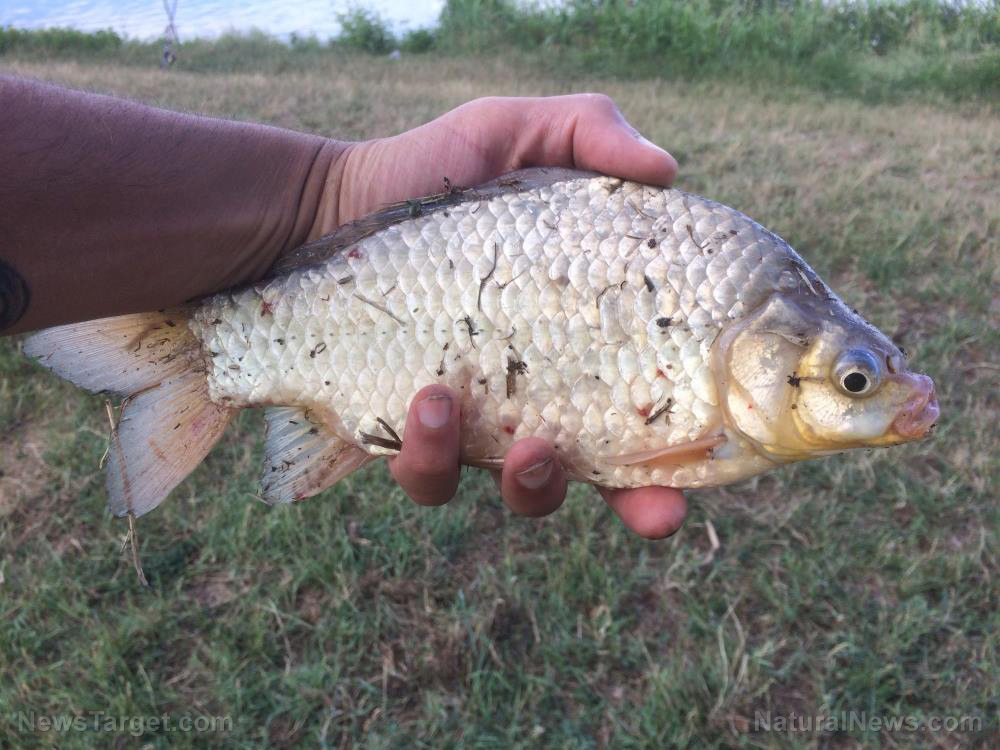
Cyanotoxin is produced by bacteria called cyanobacteria or blue-green algae. They can be found everywhere, but are most abundant in freshwater.
Cyanotoxin is known to affect organs such as liver, kidneys, heart, intestines, lungs, and brain. When ingested, cyanotoxin can cause hepatoenteritis, headaches, diarrhea, dehydration, and kidney damage, among others.
This toxin may be present in fish and shellfish that grew in contaminated water. It can also be found in plant-based foods, such as cereals, which have been irrigated with contaminated water. (Related: Environmental toxins are in water, food and garden: Dirty Dozen list from the EPA and how you can reduce exposure.)
Steaming fish reduces levels of cyanotoxin
Different cooking methods can reduce the amount of cyanobacteria in food, according to the researchers from the University of Seville. Their study examined different ways of preparing fish and looked into how cooking reduced the amount of a certain cyanotoxin called cylindrospermopsin in freshwater fish. They found that boiling fish for two minutes can reduce cylindrospermopsin levels by up to 18 percent, but not as much as steaming, which reduced cylindrospermopsin levels by 26 percent. Moreover, steaming reduced cylindrospermopsin to acceptable levels as recommended by World Health’s Organization (WHO) Provisional Tolerable Daily Intake.
The results further revealed that boiling did not actually eliminate cylindrospermopsin, but only transferred it to the cooking water.
“Our results show that it is not recommendable to eat raw freshwater fish, that it should be cooked, and better steamed than boiled, for more than two minutes and that the water used for cooking should not be used for stocks, as it contains water-soluble toxins, which are transferred from the fish to the water,” said the researchers.
A report by the European Food Safety Authority (EFSA) stated that there are not many studies about the transference and bioaccumulation of cyanotoxins in food. Little research has also been done on cyanobacteria’s toxicity.
“They [cyanotoxin] are emerging toxins, which currently need to be tested to evaluate the risks that their presence in water and food might cause for humans and for the environment,” the researchers explained.
“It is fundamental to continue investing research resources in this area, as the real exposure to consumers is not known, and therefore the risk is also unknown.”
They researchers mentioned that they plan to pursue further studies by looking at other cooking methods, such as griddle- and microwave-cooking. They also plan to follow the recommendation of EFSA and pursue a research about the toxicological profile of cyanotoxins.
Things to consider during food preparation to ensure food safety
While cyanotoxins contaminate food even before it enters the food chain, food contamination typically happens when food is handled. For instance, people can contaminate food with bacteria if they do not wash their hands prior to food preparation. Once contaminated, these bacteria can multiply and produce toxins, which then cause serious health issues. Below are the important steps to follow when preparing food in order to avoid contracting foodborne illnesses.
- Clean
- Wash counter tops and all cooking utensils before and after handling food.
- Wash fruits and vegetables prior to eating or preparing food.
- Wipe the lids of canned goods before opening.
- Always wash hands for 20 seconds before and after food preparation.
- Separate
- Use different chopping boards for different types of food to avoid cross contamination.
- Separate raw meat, poultry, seafood, and eggs from other food when shopping and during storage.
- Cook
- Cook food at safe temperatures. Use a meat thermometer and follow the guide below to ensure that food is thoroughly cooked.
- Fish – 145 F
- Ground beef, pork, lamb – 160 F
- Turkey, chicken, duck – 165 F
- Beef, pork, lamb – 145 F
- Cook food at safe temperatures. Use a meat thermometer and follow the guide below to ensure that food is thoroughly cooked.
- Chill
- Do not thaw food by simply taking it out of the freezer. Safely thaw frozen food by soaking it in water, putting it in the refrigerator, or defrosting it in a microwave.
- Do not leave food to marinate at room temperatures. Remember to put it in the fridge.
- Refrigerate or freeze all food within two hours to prevent spoilage.
For more information about food toxicity and food safety, visit FoodScience.news.
Sources include:
Please contact us for more information.






















